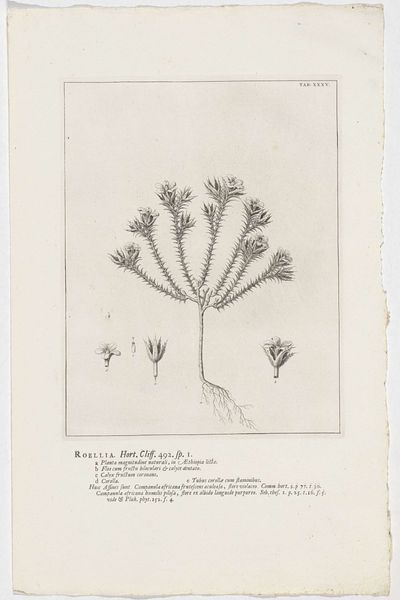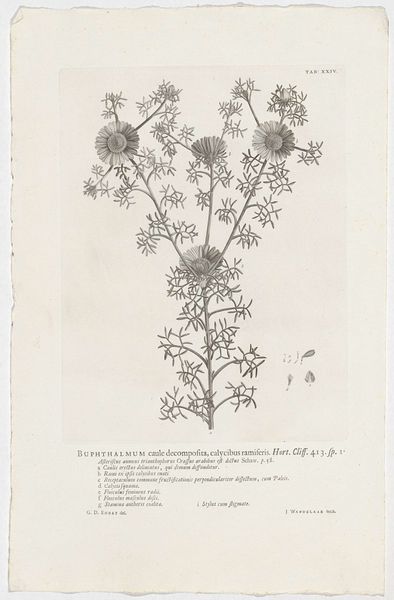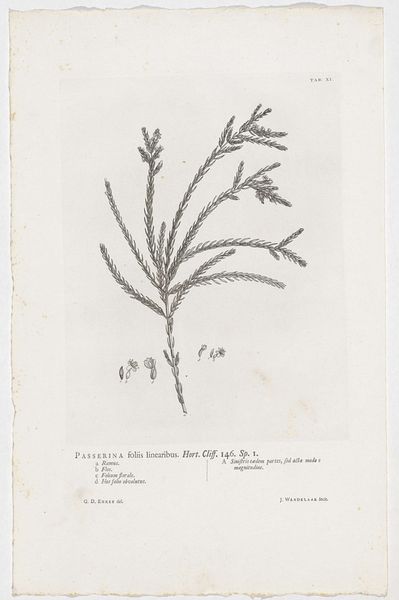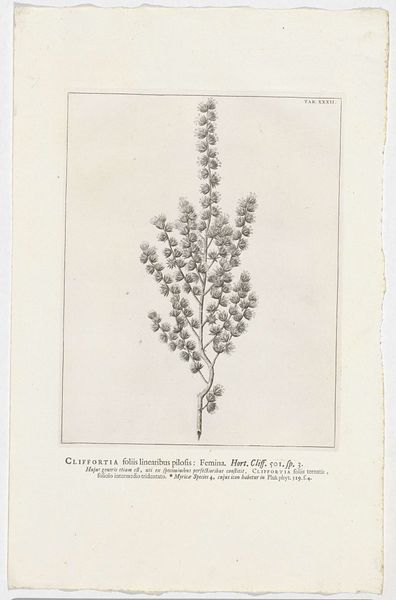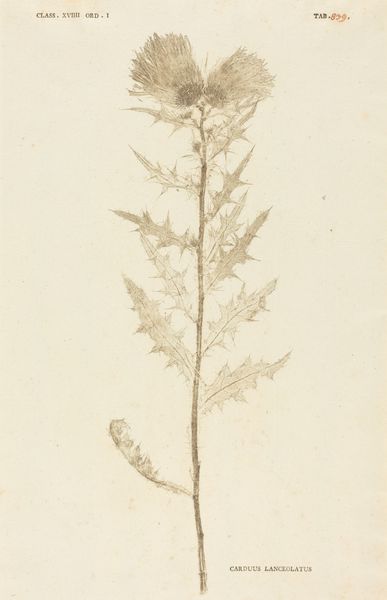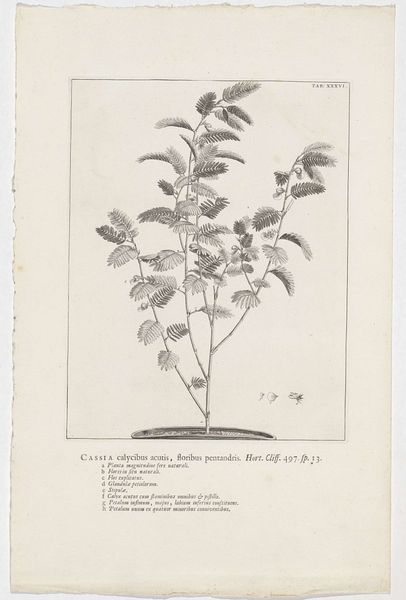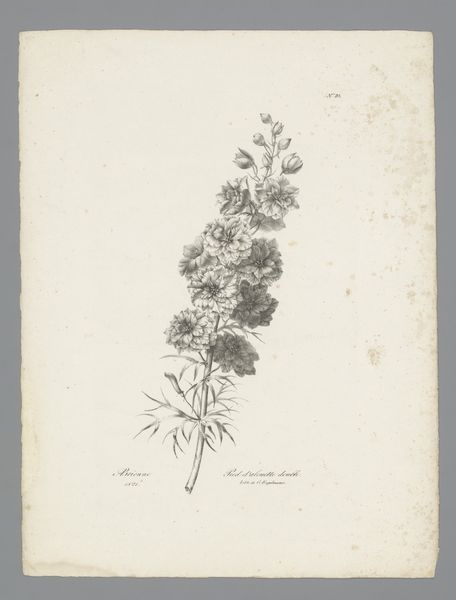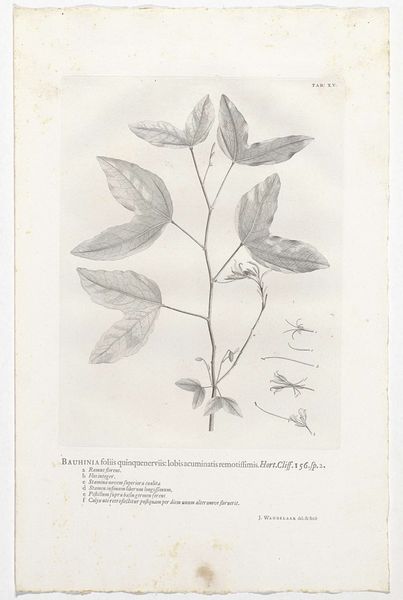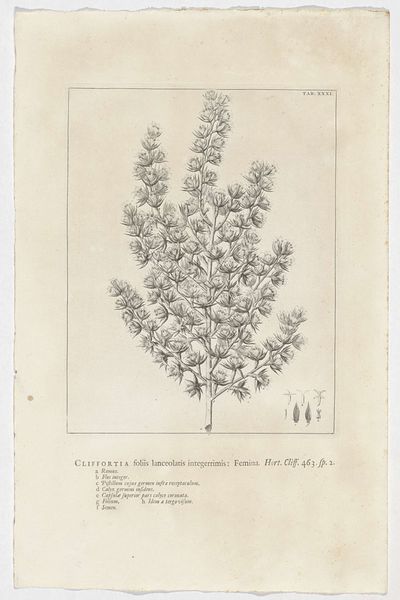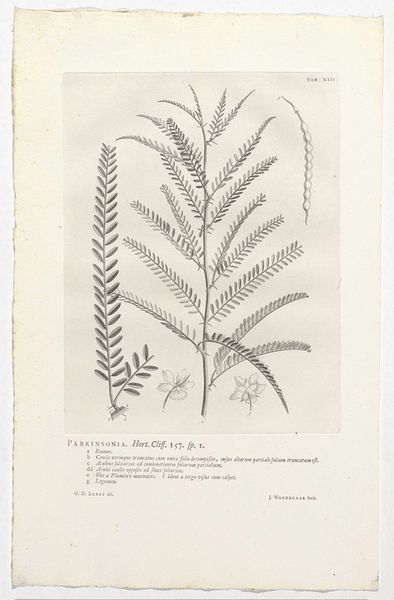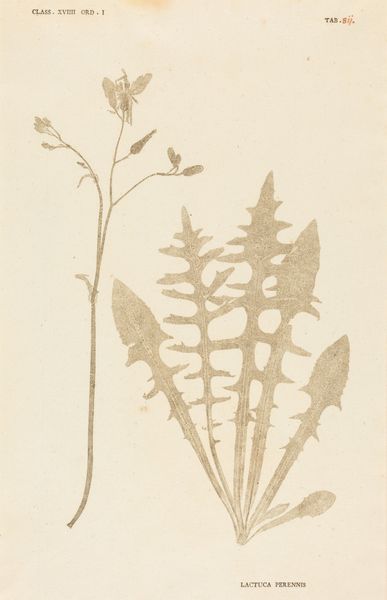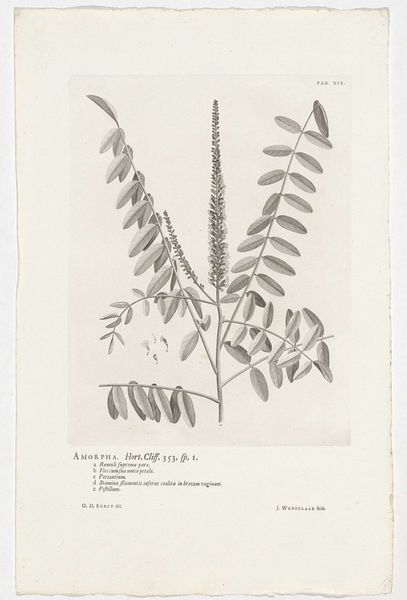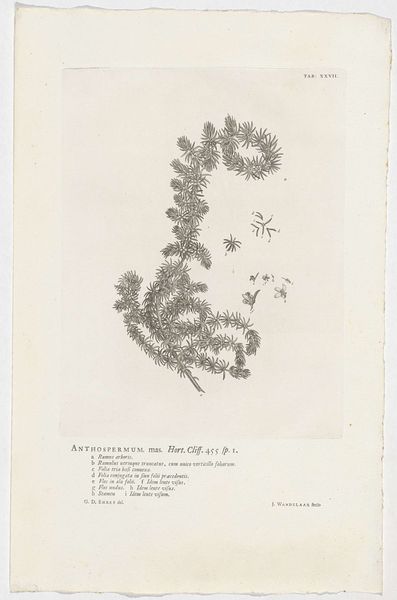
drawing, print, engraving
#
drawing
#
baroque
# print
#
engraving
Dimensions: height 289 mm, width 221 mm
Copyright: Rijks Museum: Open Domain
Editor: So, this is a drawing and engraving by Jan Wandelaar, called *Cliffortia ilicifolia*, from 1738. It feels so precise, almost clinical in its detail, but somehow still graceful. What do you see in this piece beyond just botanical illustration? Curator: The starkness is definitely deliberate. Consider the context. These botanical studies were often funded by colonial powers. Do you see a sense of appropriation here, a desire to catalog and control nature for perhaps more…exploitative purposes? Editor: I hadn’t thought of that. It’s a little disturbing, but makes sense considering the time. Does the specific plant, the Cliffortia, carry any particular symbolism, or contribute to that idea of control? Curator: Ah, that's the exciting part. While the botanical name might not resonate today, the very act of naming, classifying… what does that inherently do? It creates a perceived hierarchy, a separation. Perhaps this "scientific" distance served to legitimize certain actions within the world, even subconsciously. The plant itself becomes a symbol of resources, waiting to be tapped. Editor: So the very clean lines, the unemotional presentation, it all subtly reinforces that sense of dominion. It is so much more than just pretty flowers. Curator: Precisely. And the cultural memory embedded here, that drive to organize and possess, continues to affect our relationship with the natural world, even today. A powerful little engraving, isn’t it? Editor: Absolutely. It really makes you think about how even the most seemingly objective images can carry such a loaded cultural perspective.
Comments
No comments
Be the first to comment and join the conversation on the ultimate creative platform.
